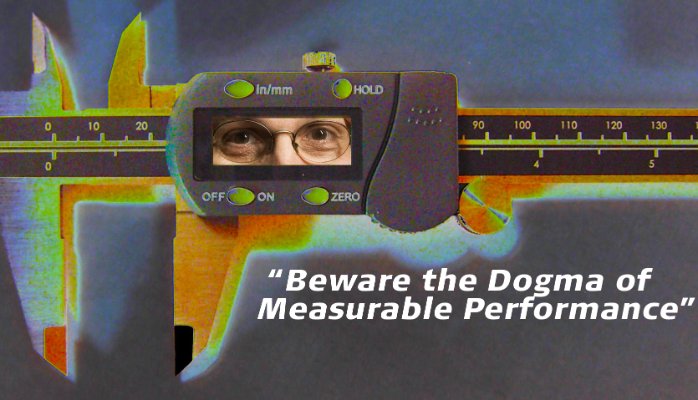
This thread begins with my new Primary Care Doctor asking about a minor pain complaint: “On a scale of 1 to 10, where would you place this pain?”
“What’s a 10?” I ask.
He’s a bit nonplussed, but it is a very important question. If we are going to use numerical scales, that implies measurable standards. Is a 10 the most painful thing imaginable? I heard from an Indonesian friend that Dengue Fever, “the bonebreak disease,” is so painful the sufferer gets to a point where death would be a welcome relief. Or is a 10 merely the most painful thing you have experienced (in which case the scale is different for everyone). If you go with Dengue as a 10, by comparison, the pains a normal person experiences in life have to be between .001 and 1. I decide to that I will get no medical attention with a ranking of 1, so I go with the personal model, and say, “2”.
Turns out 2 is good for no more than Tylenol and another appointment. Next visit, I’ll have to try a 7, though it would be tough to find out they amputate above 6. But I feel like a coward, retreating from a universal standard to a meaningless personal scale. That gets me thinking; I don’t really support the idea of reducing everything to numerical rankings.
Consumer Reports—whose rankings I read compulsively—creates numerical rankings with infographics for everything from automobiles to marmalade. They recently ranked the Tesla above 105 on a scale of 100; first time ever they exceeded the top number. Clearly there was some fudging going on there. Further recognition that numerical scales fall short of the full picture? But what keeps me coming back to CR is their ability to add text, pictures and video to give nuance to their infographics.

(I couldn’t find the 105 ranking for this example of a CR graphic, but it did happen! Maybe the cosmic implications of a 105 ranking made them retract it.)
There are whole industries built around numerically ranking people; It seems to me seems fraught with danger. In the Olympics, 5 judges watch an athlete and their scores are averaged. But everyone watching feels the injustice of seeing a brilliant performance just miss the podium. Or employment selection: highly evolved artificial intelligence programs analyze the vocabulary and semantics of resumes and deliver a stacks of candidates by numerical ranking. Only then are they reviewed by humans, and fewer still actually interviewed. Totally dehumanizing! Is it any wonder there is so much turnover in the labor market?
Blogs are flooded with clickbait headlines of 5 ways of this or 7 keys to that. As if the number were somehow magical. Top 10 lists abound. Then there are election polls! What an insane proposition. People can tell you their positive rating, their negative rating, but until they pull the lever in that booth, it’s all an multi-dimensional stew. What is it about numbers that gives us such security?
When I was a design greenhorn, I audited a class given by the famous industrial designer, George Nelson. Nelson researched his work exhaustively, yet at the same time he warned his graduate students to beware “The Dogma of Measurable Performance.” Nelson, of course, used science and technology in many imaginative ways, but he was trying to teach something important, something our civilization has lost sight of: many things cannot—ought not—be measured on a numerical scale.

Nelson’s office designed everything from clocks and chairs to world fair exhibits and buildings.
Nelson wanted his products to touch the heart, to make people smile. Design needs rational inputs, but much of the process is deeply intuitive. Nelson is also the first person I ever heard say “People buy things based on emotion and justify with fact” (though the saying is probably ancient). This makes perfect sense; the facts validate what we wanted at some deeper emotional level.
So I’m glad to see the appearance of a new book “Nonsense, The Power Of Not Knowing” by Jamie Holmes (2015), which posits– at the risk of oversimplification- that we should embrace “not knowing”. Holmes seems to suggest that uncertainty is not just a fact of life but a resource—something to stimulate our imagination and make us wary of easy answers. This is certainly something that designers have felt and used in the past, perhaps not articulated in the way Holmes does.

The design of products is a process that starts factually: taking into account the human needs (size, shape, utility, cost), but is essentially an intuitive process. Is the emotional attraction of a Tesla paying 4 times the cost of a Nissan Leaf? The answer is non-numerical: It depends on what the buyer wants. True, Tesla has a waiting list and Leafs are more readily available, but the point is that perceptions about economy, social responsibility, luxury, prestige, preference, and exclusivity—all powerful drivers in brand selection—ineffable and arise largely from subconscious and emotional processes. We chose brands to be reflections of our values. The important thing that we enjoy brands for is their features, but we love them for how they make us look and what they say about us.
For those of us on the wet end of designing brands and experiences, this idea of how people ‘measure’ their experience is vital. While numerical ratings fall short of a full review, they are useful for helping us evaluate and decide.
They are also really useful in discovering where an owner’s satisfaction level settles in, post-purchase. All brands that succeed do so because a certain number of people love the brand and chat it up. I have a HP desktop printer that occasionally pulls the finished sheet back into the mechanism and chews it up. I curse a blue streak at it when this ‘backfeeding’ happens, yet overall, I am always enthusiastic about the product—I give it at least a 9, because it has so many great features for such a moderate price. In such a case, having the qualitative description of why it’s not a 10, paired with my numerical ranking of 9, helps communicate the relative magnitude of my content/discontent.
OK, I have tried to set the table here with some examples; here’s my proposition:
- Numerical evaluations have severe limitations when applied to complex human experience. We will never get rid of numerical evaluations; they make life easy for computers, and we, the obedient netizens, are trained to accept them. They do actually bring some value to decisions about creating and purchasing branded products. They are just not the whole story.
- Applying numerical ratings to make a whole story requires some ingenuity. I buy utilitarian products on line all the time, and I read the reader’s rankings. I will buy a product someone has rated a 1 star out of 5 if their gripe is something I don’t care about and there’s a reasonably high average rating, (my ranking of the HP printer is an example) Conversely, a low rating for a key component kills my impetus to ‘buy it now’. So for utilitarian products, numbers plus narrative are an acceptable ‘whole story’ on the purchase end.
- Selling the product is only a midpoint in the branding process – if the customer buys the product and doesn’t tell anyone else that they liked it, the brand is not going to take off. Securing the endorsement of the experienced purchaser is the lifeblood of brand. It’s analogous to becoming a grandparent – you know your genes are a success! Hearing an endorsement from a stranger may equate to a 5, hearing it from a close friend gets you up into the 10 range.
- The numerical is a great indicator of our rational reasons for engaging with a brand. The emotional realm of purchasing decisions remains the most fertile area for invention.
 David Laufer is Managing Partner of BrandBook LLC, an Atlanta based design firm specializing in branding for expertise-based enterprises. He is the author of Dialogues with Creative Legends, Aha Moments in a Designer’s Career (New Riders, 2012). He is a founding trustee of the Atlanta Chapter of AIGA, the professional association for Design, and is active in Little Free Libraries, a global literacy action movement. @Dav1dLaufer – www.brandbook.us
David Laufer is Managing Partner of BrandBook LLC, an Atlanta based design firm specializing in branding for expertise-based enterprises. He is the author of Dialogues with Creative Legends, Aha Moments in a Designer’s Career (New Riders, 2012). He is a founding trustee of the Atlanta Chapter of AIGA, the professional association for Design, and is active in Little Free Libraries, a global literacy action movement. @Dav1dLaufer – www.brandbook.us




